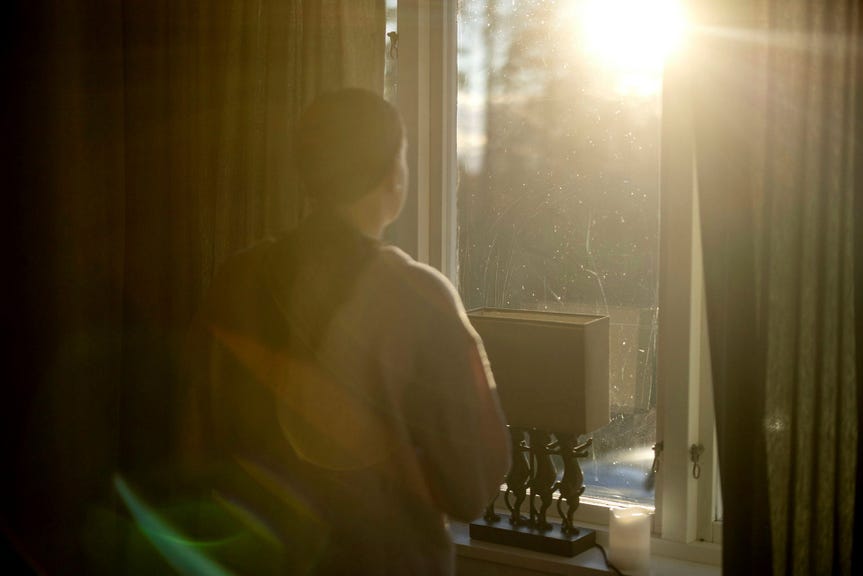Tuva, a resident of Aspviksgården, a group home for troubled teenage girls, overdosed on a cocktail of drugs following the death of her mother. The 16-year-old had a history of substance abuse and had been placed at Aspviksgården for round-the-clock care after running away from several other facilities. Tuva’s overdose, however, was not prevented by the staff at the group home. Instead, it was her fellow residents, 19-year-old Bea and 16-year-old Leyla, who discovered her unresponsive and initiated life-saving measures. They performed CPR and called emergency services, effectively taking on the responsibilities that should have fallen to the adults entrusted with their care. This critical intervention ultimately saved Tuva’s life, highlighting a severe lapse in the oversight and care provided by the institution.
The incident exposed serious concerns about the operation of Aspviksgården. The girls’ accounts, corroborated by emergency responders, painted a picture of neglect, with staff seemingly absent or unresponsive to Tuva’s deteriorating condition. The official report from Aspviksgården contradicted the testimonies of the girls and first responders, claiming that staff had regularly checked on Tuva and were involved in the emergency response. However, the emergency call transcript and subsequent investigations revealed that the girls were alone in their efforts to revive their friend. The ambulance crew, firefighters, and police all noted the unusual circumstance of the residents taking charge of the emergency, raising questions about the adequacy of staff supervision. The discrepancies between the official narrative and the accounts of those present raised red flags about the home’s practices and its commitment to the well-being of its residents.
The incident triggered multiple reports to the Health and Social Care Inspectorate (IVO), detailing the apparent lack of supervision and the reliance on the girls to manage the crisis. The reports questioned why the staff hadn’t noticed Tuva’s condition, why the residents were performing CPR, and why the staff’s account differed so drastically from the reality witnessed by the emergency responders. The police report, in particular, noted that the girls claimed such incidents were commonplace, with staff often leaving them to handle situations themselves. Despite these serious allegations, the initial Lex Sarah investigation concluded without finding any wrongdoing, despite acknowledging a ”tangible risk” of misconduct. This outcome further fueled concerns about the efficacy of the oversight system and its ability to hold institutions accountable for failures in care.
Tuva’s overdose and the circumstances surrounding it illuminated a systemic issue within the for-profit care system. Aspviksgården, operated by a company with extraordinarily high profit margins, appeared to prioritize financial gain over the well-being of the vulnerable children in its care. The company’s justification for its high profits – increased occupancy and better pricing – raised questions about whether sufficient resources were being allocated to staffing and providing adequate care. This incident served as a stark reminder of the potential dangers of prioritizing profits in a sector responsible for the care of vulnerable individuals. The fact that the girls were left to fend for themselves in a life-or-death situation suggested a disturbing lack of investment in qualified staff and appropriate supervision.
Tuva’s story also highlighted the strength and resilience of the young residents of Aspviksgården. Despite the challenging circumstances and the lack of proper adult supervision, Bea and Leyla stepped up in a moment of crisis. Their quick thinking and decisive actions undoubtedly saved Tuva’s life. While their courage is commendable, it also underscores the tragic reality that these vulnerable teenagers were placed in a position where they had to assume the responsibilities of trained professionals. This incident raises profound questions about the system’s failure to protect these young people and provide them with the safe and supportive environment they deserve.
Following her overdose, Tuva faced a long and difficult recovery, with lasting physical and cognitive impairments. Her experience, and the events surrounding it, deeply impacted her family, who lost trust in the care system that was supposed to protect their daughter. The incident left Tuva and her family questioning the effectiveness and ethicality of for-profit care homes and demanding greater accountability for those entrusted with the welfare of vulnerable children. The ongoing IVO investigation into Aspviksgården offers a glimmer of hope that the systemic issues within the institution will be addressed and that measures will be taken to prevent similar incidents from occurring in the future. Tuva’s case serves as a stark warning about the potential consequences of prioritizing profit over care and the urgent need for reform within the for-profit care system.














